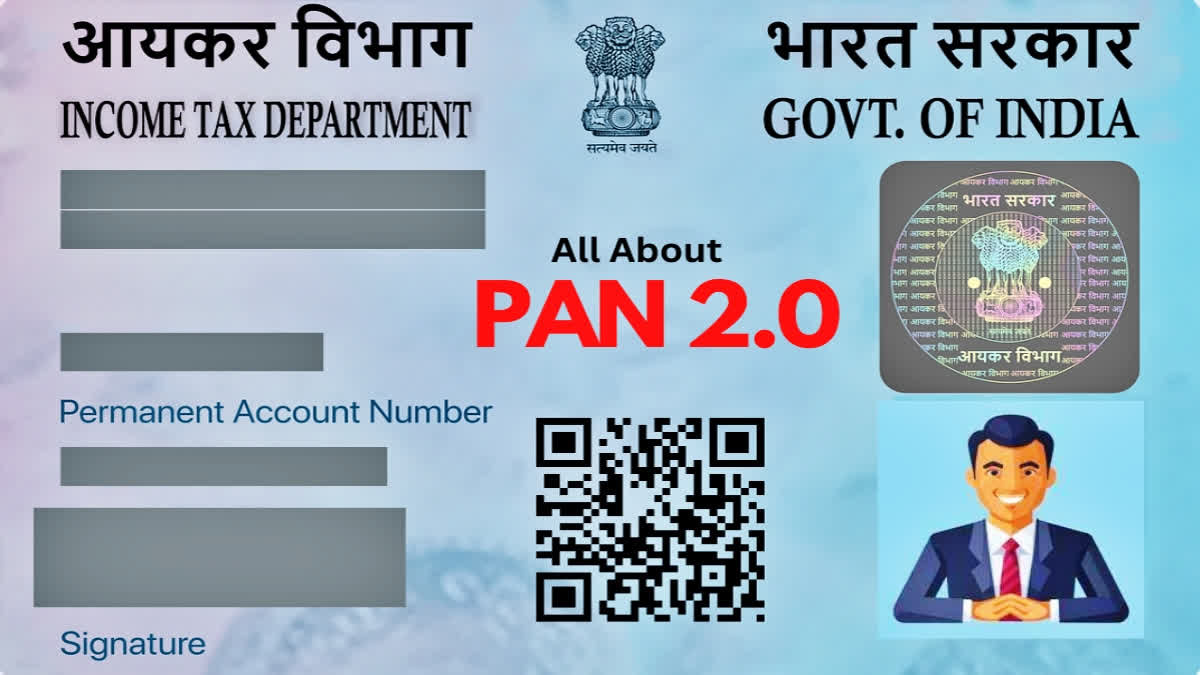The central government's Rs 1,435 crore PAN 2.0 project aims to overhaul the existing PAN 1.0 system. The project received a nod from the Cabinet Committee on Economic Affairs (CCEA), chaired by Prime Minister Narendra Modi on November 25, 2024.
As per a CCEA statement, the PAN 2.0 Project "enables technology-driven transformation of Taxpayer registration services".
What Exactly Is PAN 2.0?
Let's understand what PAN 2.0 is and whether or not it is different from the current PAN.
As we know, PAN or Permanent Account Number is a ten-digit alphanumeric number issued by the Income Tax Department. The number enables the department to link all transactions of a person including tax payments, TDS/TCS credits, returns of income, specified transactions, correspondence, and so on.
The government aims to upgrade the existing PAN and make it more digital by creating a seamless experience for taxpayers. Consider PAN 2.0 as a comprehensive upgrade of your existing Permanent Account Number.
Once the new PAN 2.0 system is up and running, the government says it will make PAN a "common identifier" for digital interactions across government systems, ensuring uniformity and ease of compliance. Think of it as a synced database that all government systems would recognize and use accordingly to enable ease of services.
According to CCEA, the initiative will integrate core and non-core PAN/TAN services into a unified, paperless platform, aligning with the government’s Digital India programme.
Is My Current PAN Card Valid Or Do I Need a New One With QR Code?
Citizens can upgrade their existing PAN with the new QR code at no additional cost however doing so is not mandatory and the existing PAN cards will remain valid. The same was clarified by Union Minister Ashwini Vaishnaw on Monday.
“Citizens will not need to apply for new PAN numbers. The upgrade is aimed at enhancing functionality without affecting the validity of current cards," Vaishnaw said.
The minister for railways, information & broadcasting, electronics & IT said the project aims to upgrade to current systems and set a unified portal that will be completely paperless and online. "We will explore whether it can serve as a common business identifier. A unified portal will be established, which will be entirely paperless and online, with a strong focus on grievance redressal," the minister said.
Features And Benefits Of PAN 2.0
According to CCEA, the PAN 2.0 Project has significant benefits including:
- Ease of access and speedy service delivery with improved quality;
- Single Source of Truth and Data Consistency
- Eco-friendly processes and cost optimization; and
- Security and optimization of infrastructure for greater agility.
Understanding PAN
The income tax department has issued 78 crore PAN cards, with 98% held by individuals. While PAN is a number, a person's PAN Card is a card that includes his or her PAN and other details including name, DoB, and photo. A PAN card also works as proof of identification.
A PAN comprises four letters followed by three numbers and then one more letter. The Income Tax department has explained what these letters and numbers signify.
According to it, a typical PAN is AFZPK7190K. The first three characters i.e. "AFZ" in the PAN are an alphabetic series running from AAA to ZZZ. The fourth character of PAN i.e. "P" in the above PAN represents the status of the PAN holder. "P" stands for Individual, "F" stands for Firm, "C" stands for Company, "H" stands for HUF, "A" stands for AOP, "T" stands for TRUST etc.
The fifth character i.e. "K" in the above PAN represents the first character of the PAN holder's last name/surname. The next four characters i.e. "7190" in the above PAN are sequential numbers running from 0001 to 9999. The last character i.e. "K" in the above PAN is an alphabetic check digit.



